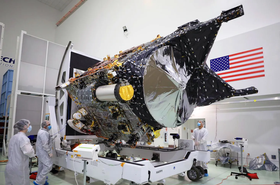Telcos are expected to invest more than $30 billion in Open RAN by the end of the decade.
Analyst firm Counterpoint Research expects investments will start to increase year-on-year (YoY) after 2025.
Open RAN promotes a new breed of telecoms kit that allows providers to ‘mix and match’ solutions from multiple vendors, which is impossible with proprietary network equipment.
Counterpoint says the Asia-Pacific and North American regions will remain the largest Open RAN markets for most of the forecast period.
In particular, Europe is forecast to record the fastest growth with a CAGR of 108 percent between now and 2030 as its Tier-1 markets finally start commercial deployments at scale, driven partly by the need to replace legacy Chinese 3G and 4G networks.
One of Europe's biggest advocates for the technology has been Vodafone, which has deployed its Open RAN network in the UK, and announced plans to do the same in Italy.
Last month the telco said it aims to have 30 percent of its masts based on the technology by the end of the decade and is working with Nokia to run a commercial 5G Open RAN pilot in Italy for the first time.
"Open RAN is a central pillar of our network strategy for numerous reasons. Most importantly, we see this as a vehicle for transformation, opening doors that would otherwise have been closed,” said Andrea Dona, chief network officer, Vodafone UK, when talking about Open RAN in August.
Other telcos including Orange, have also been pushing the need more for open networks. The French telco has teamed up with Vodafone to carry out a number of 4G calls over a number of shared commercial network sites in a rural area near Bucharest, Romania, based on O-RAN technology.
As for the Open RAN-compliant radio market, Counterpoint reports it has so far been dominated by Asian vendors Samsung, NEC, and Fujitsu.
However, this is expected to extend to other players before the end of the decade, with the market share of the trio being challenged.







